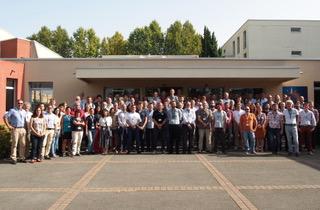The 10th X-IFU Consortium Meeting
The 10th X-IFU Consortium Meeting was hosted by IRAP in Toulouse from Monday 16th to Friday 20th of September.

Participants met during various splinters and all together for the two days of plenary sessions. The programme was rich in topics related to activities triggered by the Instrument Preliminary Requirement Review (IPRR), which was held and concluded positively before the summer. Overall, it was agreed that the level of definition of all corners of the instrument keeps raising. Additionally, this was the first consortium meeting led by the recently appointed Project Manager from CNES, Vincent Albouys.
An important upcoming activity for the project is the Mission formulation Review (MFR) which will be carried out over the next months by the European Space Agency. The instrument itself will not be under review as the objective of the MFR is mainly to confirm the feasibility of Athena. It will be concluded by a board meeting scheduled for November 12th.
Of great significance, the X-IFU Consortium board agreed to reduce the number of physical meetings and optimize each of them in order to lower by at least a half the travel footprint of the project. From now on, there will only be one consortium meeting a year, together with two meetings of the X-IFU project managers. This proposal was introduced by the Principal Investigator, Didier Barret, who provided members of the Consortium with a tool to estimate their own travel footprint and raise their awareness on their own environmental impact.
On a lighter note, the whole consortium got to enjoy the X-IFU Cuvée “A la Thien” which was selected by our very own X-IFU wine selection committee to celebrate the successful IPRR of the project.
Thanks to the hard work put in by the entire consortium, the X-IFU is on the path to its next milestone, the Mission Adoption Review, which will be preceded by the System Requirement Review. The next X-IFU Consortium meeting will be held in April 2020, jointly hosted by the Centre Spatial de Liège and the University of Liège in Belgium.
Further Resources
- Dedicated WebSite : x-ifu.irap.omp.eu
IRAP Contact
- Didier Barret, didier.barret@irap.omp.eu






